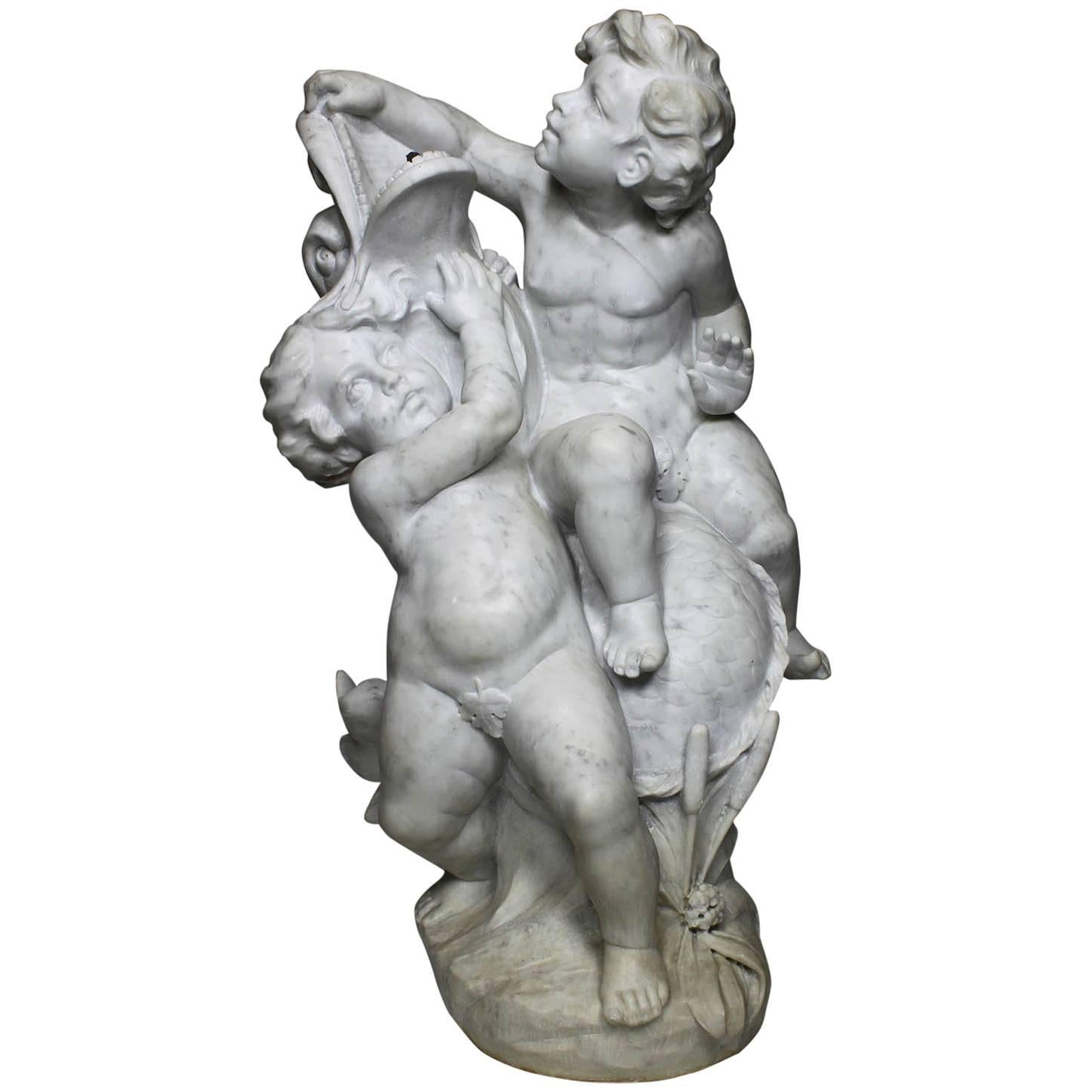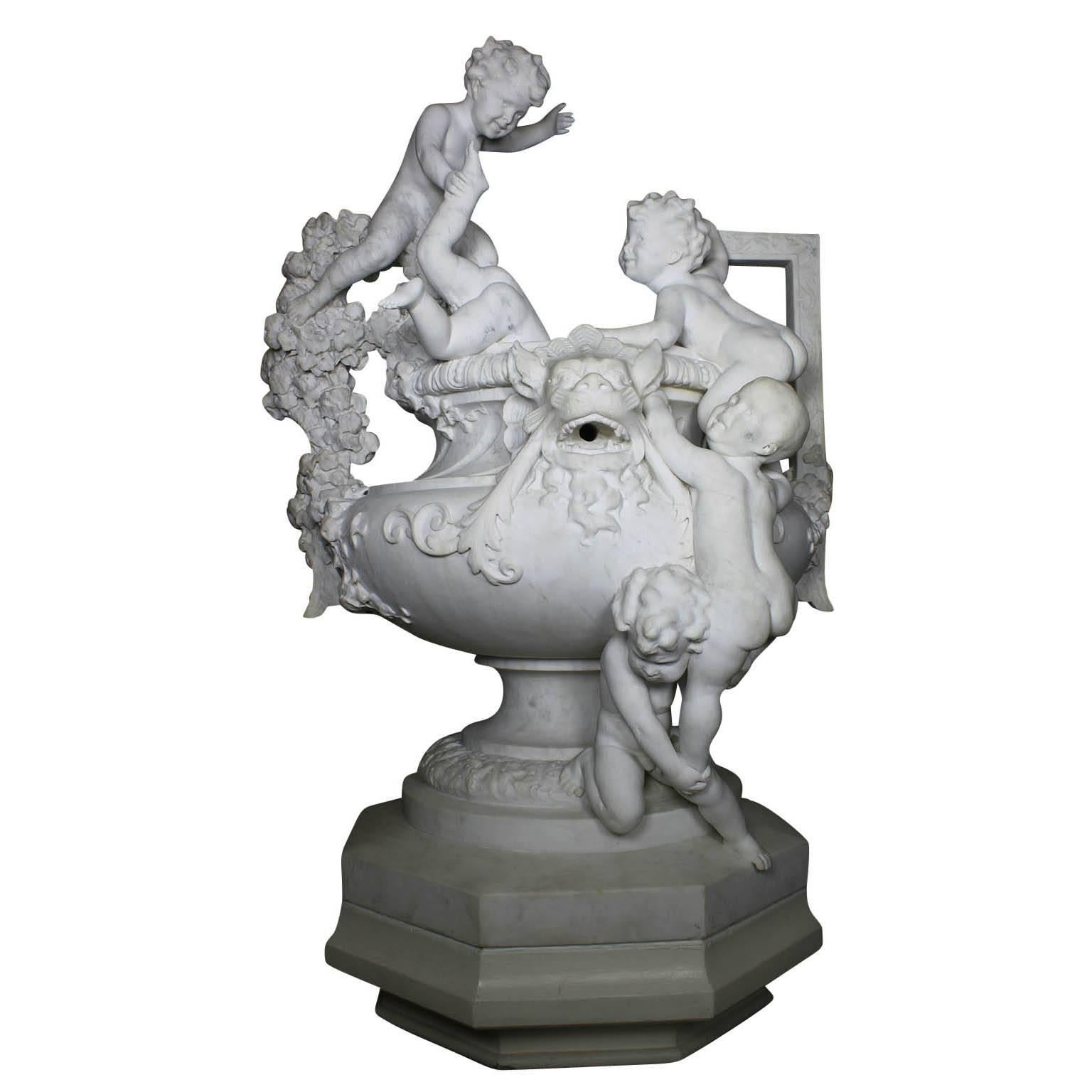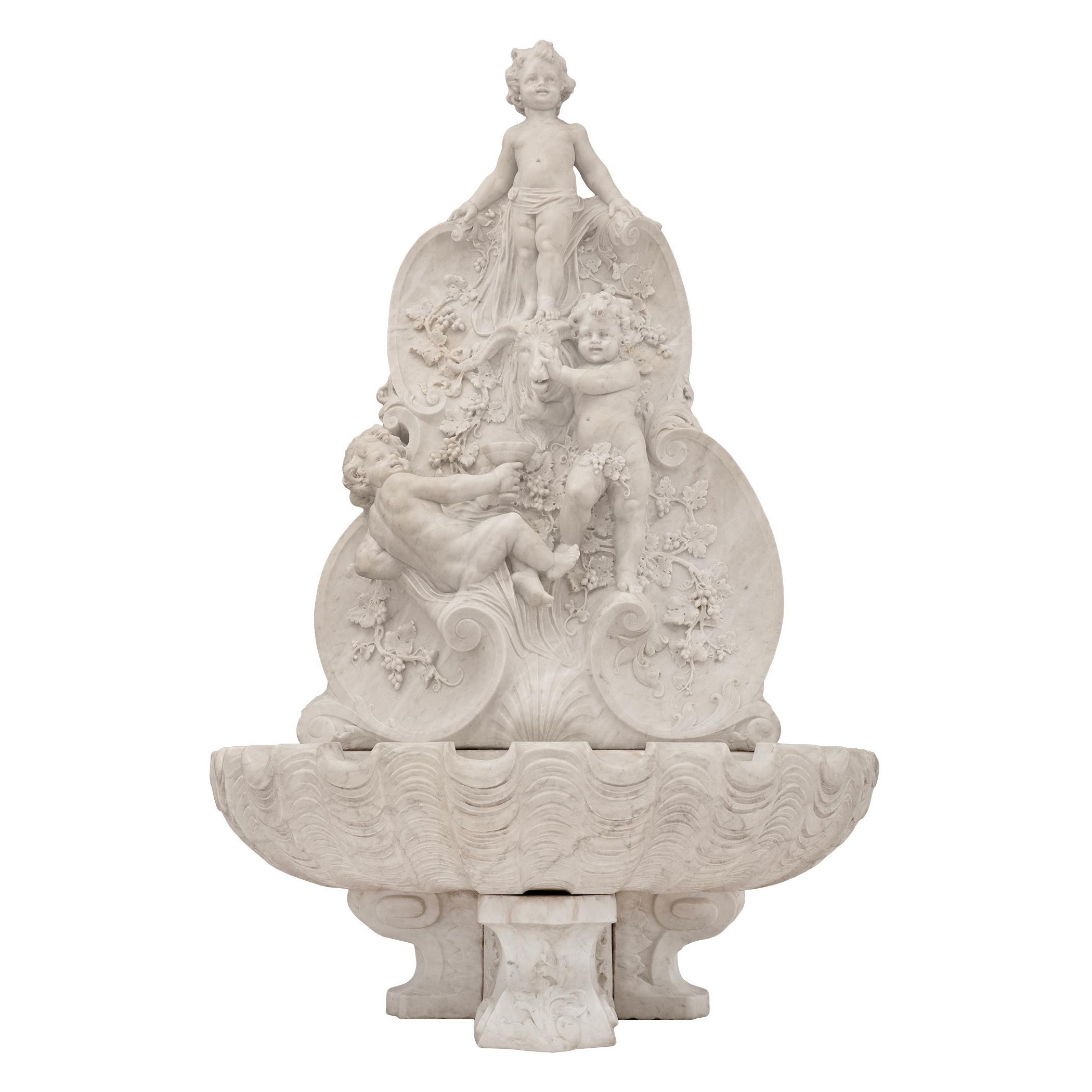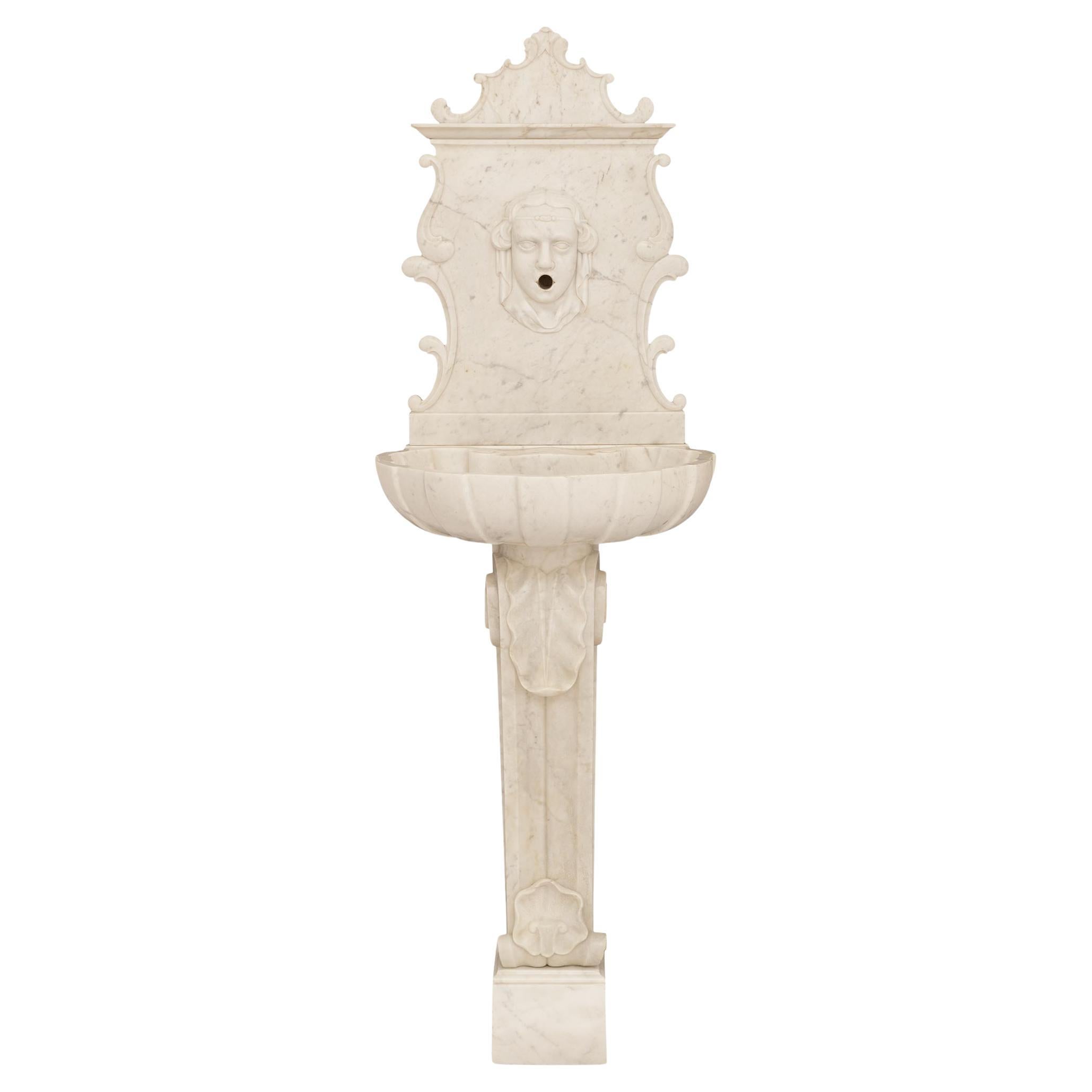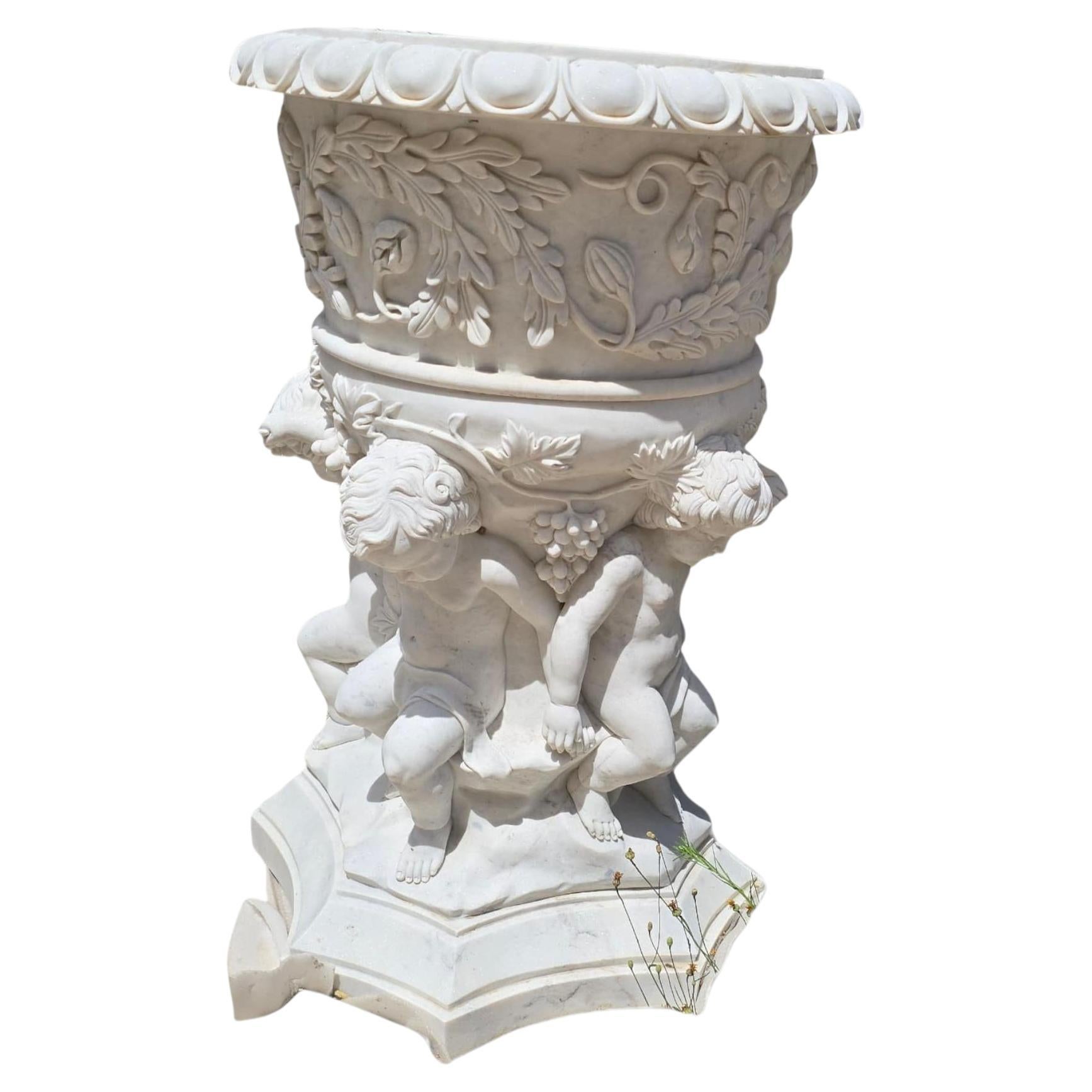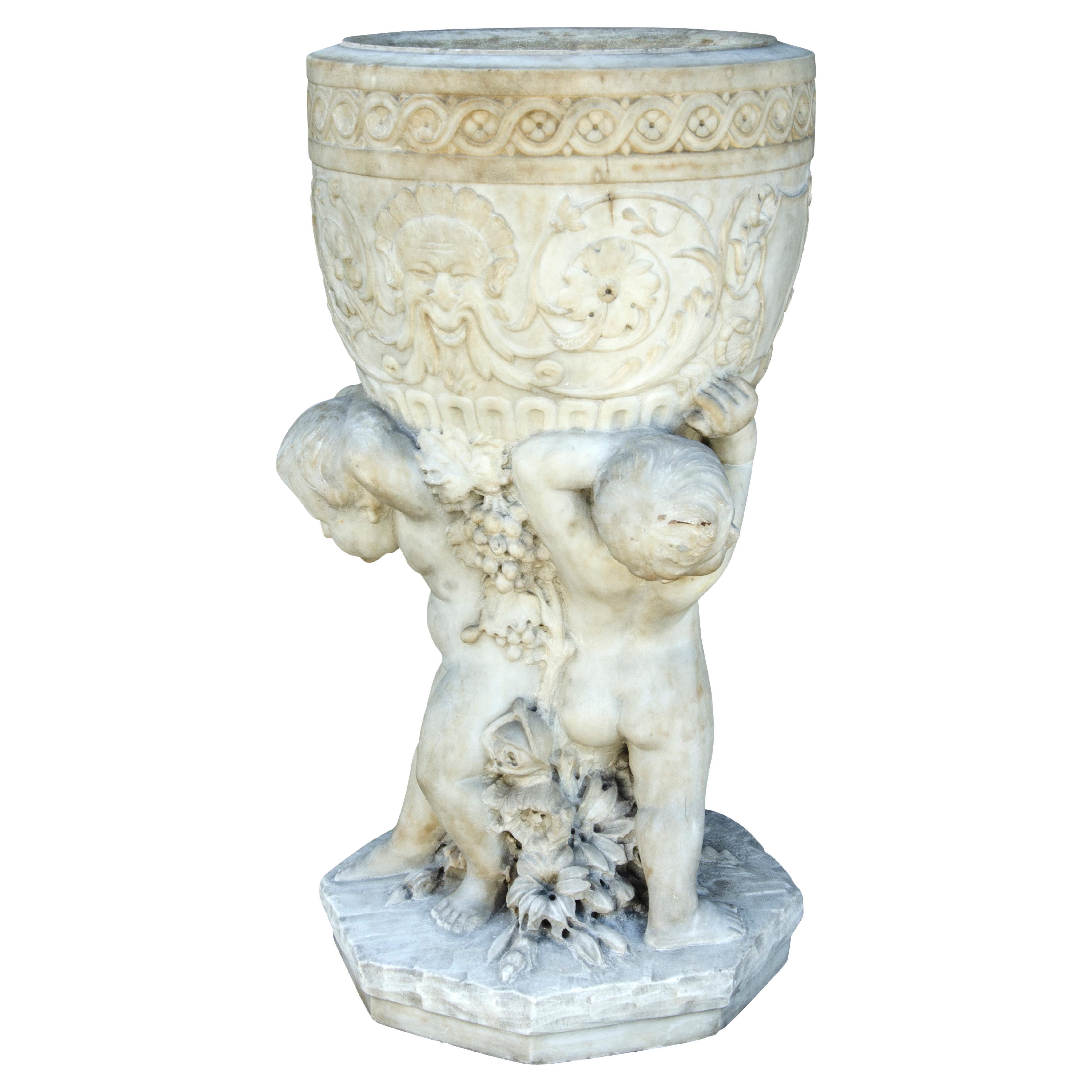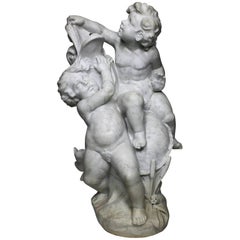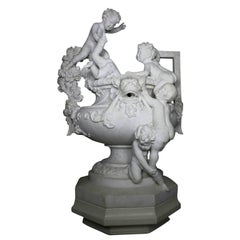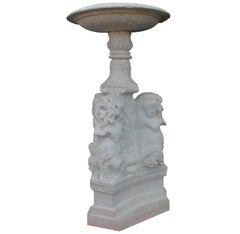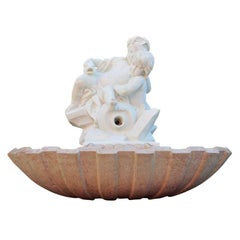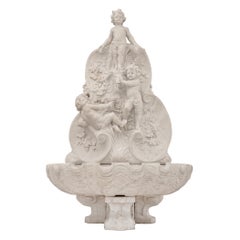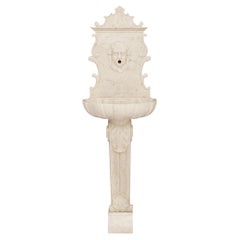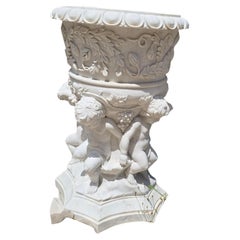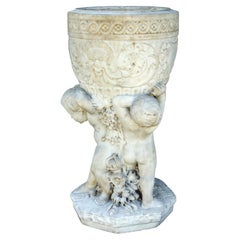Items Similar to Italian 19th-20th Century Whimsical White Marble Wishing Wellhead with Children
Video Loading
Want more images or videos?
Request additional images or videos from the seller
1 of 22
Italian 19th-20th Century Whimsical White Marble Wishing Wellhead with Children
$194,500
£146,357.06
€169,199.89
CA$274,639.61
A$297,789.74
CHF 158,033.51
MX$3,667,659.34
NOK 1,958,725.70
SEK 1,848,586.71
DKK 1,262,949.75
About the Item
A very fine and exceptionally carved Italian 19th-20th century Baroque Revival style whimsical white Carrara marble wishing wellhead, raised on an octagonal two-step marble base. The intricately carved marble relief circular wellhead depicting carved figures of dancing and cheerful children (Putti) among vines, flowers and fruits, dancing and playing musical instruments with a backdrop of castles, landscapes, forests and wreaths, Florence, circa, 1900.
Note: We have part II video of this amazing Wishing Wellhead. Please feel free to request a copy.
Literature:
A similar wellhead was sold by Jan's & Co. Fine French Antiques, Inc. in 1999, provenance the Atkinson/Kirkeby Estate and it is illustrated in "The Estates of Beverly Hills" by Charles Lockwood and Jeff-Hyland, page 150.
Another similar is currently on display at the gardens of "The Elms" mansion a public museum part of the Newport Mansions by The Preservation Society of Newport County in Newport, Rhode Island.
Yet another similar wellhead carved with frolicking putti with musical instruments and a dentil molded rim is located at Cranbrook House, Bloomfield Hills, Michigan, and is illustrated in B. Israel, Antique Garden Ornament: Two Centuries of American Taste, 1999, p. 207.
Measures: Height 32 inches (81.3 cm)
Diameter 51 inches (129.6 cm)
Marble steps (lower level) 92 inches (233.7 cm)
Marble steps (upper level) 70 inches (177.8 cm)
Depth of each step 11 inches (28 cm).
- Dimensions:Height: 32 in (81.28 cm)Diameter: 51 in (129.54 cm)
- Style:Baroque Revival (In the Style Of)
- Materials and Techniques:
- Place of Origin:
- Period:1900-1909
- Date of Manufacture:circa 1900
- Condition:Repaired: Some marble in-fills due to old weathering. Wear consistent with age and use. Minor losses. Minor fading. A truly stunning marble wellhead. Some weathering, old stress hairlines, losses, nicks. The center hole with evidence of rope rubbing. Steps have some crack repairs and filled losses. Special handling required for shipping & installation. View images.
- Seller Location:Los Angeles, CA
- Reference Number:Seller: Ref.: A2461 - Lot 113031stDibs: LU1796220836852
About the Seller
5.0
Vetted Professional Seller
Every seller passes strict standards for authenticity and reliability
Established in 1982
1stDibs seller since 2016
135 sales on 1stDibs
Typical response time: <1 hour
- ShippingRetrieving quote...Shipping from: Los Angeles, CA
- Return Policy
Authenticity Guarantee
In the unlikely event there’s an issue with an item’s authenticity, contact us within 1 year for a full refund. DetailsMoney-Back Guarantee
If your item is not as described, is damaged in transit, or does not arrive, contact us within 7 days for a full refund. Details24-Hour Cancellation
You have a 24-hour grace period in which to reconsider your purchase, with no questions asked.Vetted Professional Sellers
Our world-class sellers must adhere to strict standards for service and quality, maintaining the integrity of our listings.Price-Match Guarantee
If you find that a seller listed the same item for a lower price elsewhere, we’ll match it.Trusted Global Delivery
Our best-in-class carrier network provides specialized shipping options worldwide, including custom delivery.More From This Seller
View AllA French 19th-20th Century Carved White Marble Fountain Sculpture with Children
Located in Los Angeles, CA
A fine and charming French 19th-20th century carved white marble whimsical group sculpture depicting two putti (Children) playing with a dolphin, fitted for use as a fountain, Paris,...
Category
Antique Early 1900s French Louis XV Fountains
Materials
Marble
$9,985 Sale Price
20% Off
A French 19th Century Carved Marble Whimsical Figural Urn Fountain with Children
By Joseph Reynés I Gurgui
Located in Los Angeles, CA
A very fine large, rare and charming, French, 19th century. Belle Époque carved white marble whimsical figural urn fountain depicting children climbing on an urn with flowers and garlands, influenced in the Louis XV style, by Joseph Reynés I Gurgui (Barcelona, 1850-1926). Signed: Reynes. Barcelona, circa 1890.
An almost identical Carrara marble fountain also by Josep Reynés carved in 1893 currently at the Parc de la Ciutadella in Barcelona, Spain.
Measures: Overall height: 55 inches (140 cm)
Marble height: 49 inches (124.5 cm)
width: 37 inches (94 cm)
depth: 30 inches (76.3 cm)
Joseph Reynes Gurguí (Barcelona, 1850 - 1926) is a Catalan sculptor, also known as Reynesy-Gurgui, Spanish school.
He studied at the Ecole de la Llotja, studied for a time in Paris, in the workshops of the great French sculptors Jean-Baptiste Carpeaux (1827-1875) and Carrier-Belleuse (1824-1887). He devoted himself mainly to interior decoration. His works were profoundly marked by a French influence. He exhibited in Paris in 1895 where he received an honorable mention. In 1890 he obtained the first medal in Madrid for "The Violinist".
Literature:
E. Benezit Dictionaire des Peintres, Sculpteurs, Dessinateurs et Graveurs by Grund - Nouvelle Edition, 1976 - Volume 8, Page 714.
Cristina Mensoza, Ramon Casas...
Category
Antique 19th Century Spanish Louis XV Fountains
Materials
Marble
$98,450 Sale Price
21% Off
Whimsical English 19th-20th Century White Marble Figural Outdoor Dog Fountain
Located in Los Angeles, CA
A Whimsical English 19th-20th century white marble figural fountain with dogs fountain. The Baroque Revival six-sided tripod marble base surmounted with three upright seated Yorkshire Terriers resting on a leaf and acanthus center stem, topped with a semi-circular scalloped carved basin...
Category
Antique Early 1900s English Baroque Revival Fountains
Materials
Marble
French 19th Century Carved White Marble Allegorical Garden Fountain with Putti
Located in Los Angeles, CA
A fine and charming French 19th century carved white marble allegorical garden fountain group of two playful putti seated on a rocky outcrop with an upturned amphora supporting a stylized fish, drilled for water, together with a Rosso Verona marble "D" shell-shaped scalloped basin...
Category
Antique 19th Century French Louis XV Fountains
Materials
Marble
$29,850 Sale Price
60% Off
French 19th Century, Whimsical Rococo Style Marble Carved Planter with Children
Located in Los Angeles, CA
A fine French 19th century whimsical Rococo style white marble carved planter jardinière with figures of playful Putti 'Children' playing with a goats among trees and vines, raised o...
Category
Antique 19th Century French Rococo Revival Planters and Jardinieres
Materials
Marble
Italian 19th Century Carved Carrara Marble Figural Fountain Jardinière Planter
By Giovanni Battista Lombardi
Located in Los Angeles, CA
A very fine Italian 19th century carved Carrara marble figural fountain "Jardinière" modelled as a standing Putto and a Satyr supporting a sea-sh...
Category
Antique 19th Century Italian Baroque Figurative Sculptures
Materials
Carrara Marble
$28,950 Sale Price
35% Off
You May Also Like
Italian 19th Century White Carrara Marble Fountain
Located in West Palm Beach, FL
A stunning and most important large scale Italian 19th century white Carrara marble fountain. The extremely high quality wall mounte...
Category
Antique 19th Century Italian Fountains
Materials
Marble
A spectacular Italian 19th century Renaissance st. white Carrara marble fountain
Located in West Palm Beach, FL
A spectacular and high quality Italian 19th century Renaissance st. white Carrara marble fountain. This wonderful fountain is raised by a rectangular plinth supporting a top rolled c...
Category
Antique 19th Century Italian Renaissance Fountains
Materials
Carrara Marble
Monumental Hand-Carved Carrara Marble Urn with Cherubs, 20th Century
Located in Madrid, ES
Impressive and elegant monumental urn carved by hand in fine white Carrara marble, featuring charming cherubs (putti) supporting the body of the vessel. The sculptural details, inclu...
Category
Vintage 1970s Urns
Materials
Marble
$10,830 Sale Price
20% Off
Italian Carrara Marble Garden Sculpture
Located in Essex, MA
With three cherubs on an octagonal base supporting a finely carved urn.
Category
Antique Late 19th Century Italian Neoclassical Revival Statues
Materials
Carrara Marble
Italian early 18th century white Carrara marble and Stone fountain
Located in West Palm Beach, FL
A sensational and large scale Italian early 18th century white Carrara marble and Stone fountain. This stunning fountain is raised on a rectangular Stone block below a square Carrara...
Category
Antique 18th Century Italian Fountains
Materials
Stone, Marble
19th Century Italian Carrara Marble Pedestal, Neoclassical Carvings, Figural
Located in Manhasset, NY
19th Century Italian Carrara Marble Pedestal, Neoclassical Carvings,
A highly Unusual carved white marble hexagonal pedestal; pedestal sides decorated with differing figural relief,...
Category
Antique Mid-19th Century Louis XVI Pedestals and Columns
Materials
Marble
More Ways To Browse
Baroque Marble Sculpture
Jans Antiques
Relief Marble Carved
Charles Page
Sculpture Marble Children
Marble Wellhead
Monumental French Bronze
Goldscheider Wien
Nude Male Bronze
Art Deco Bronze And Ivory
German Metal Sculpture
Lovers Sculpture
Antique Grabber
Captured Bird
Hood Ornament
Marble Man
Testa Di
Italian Plaster Sculpture 20th Century
